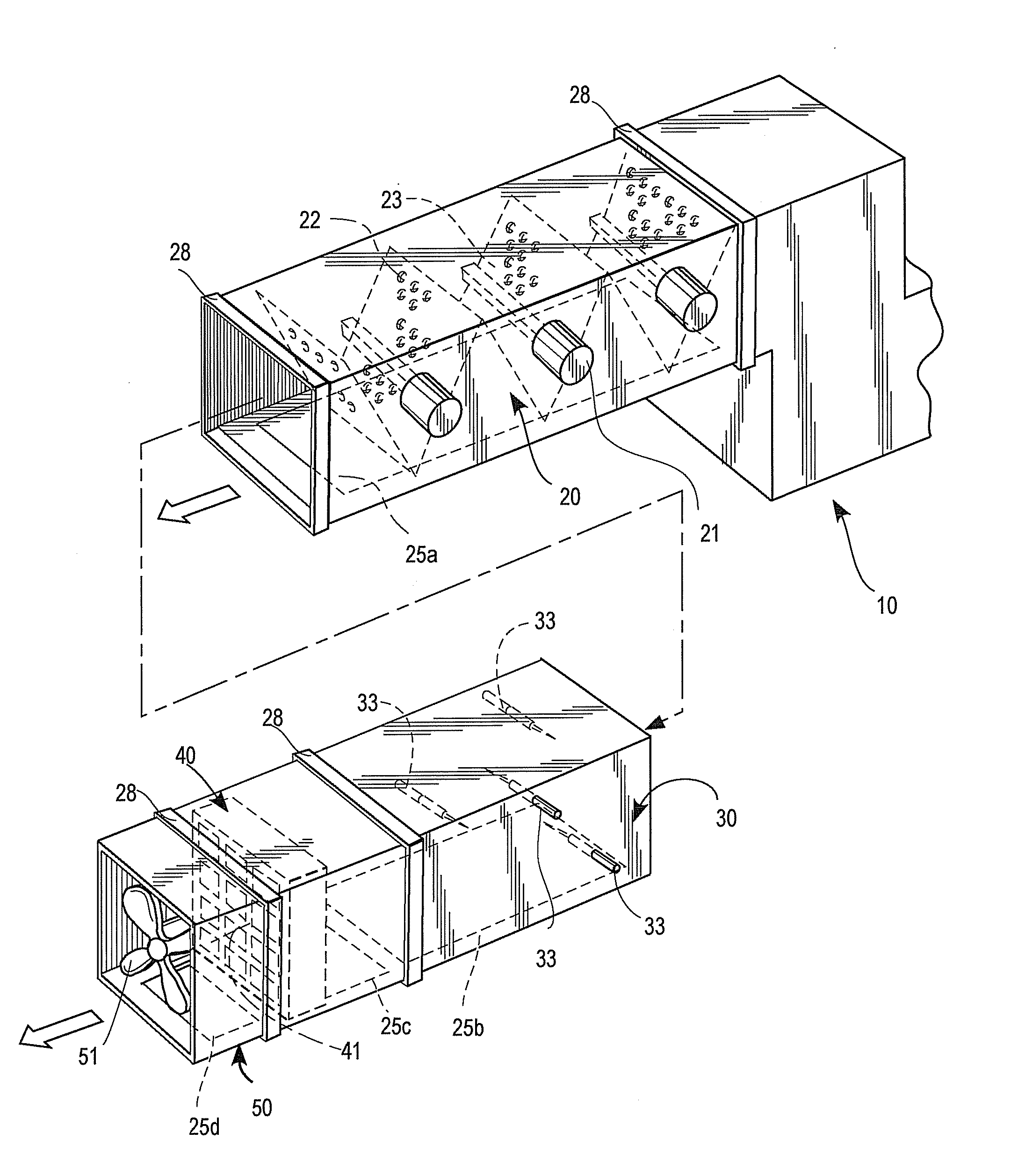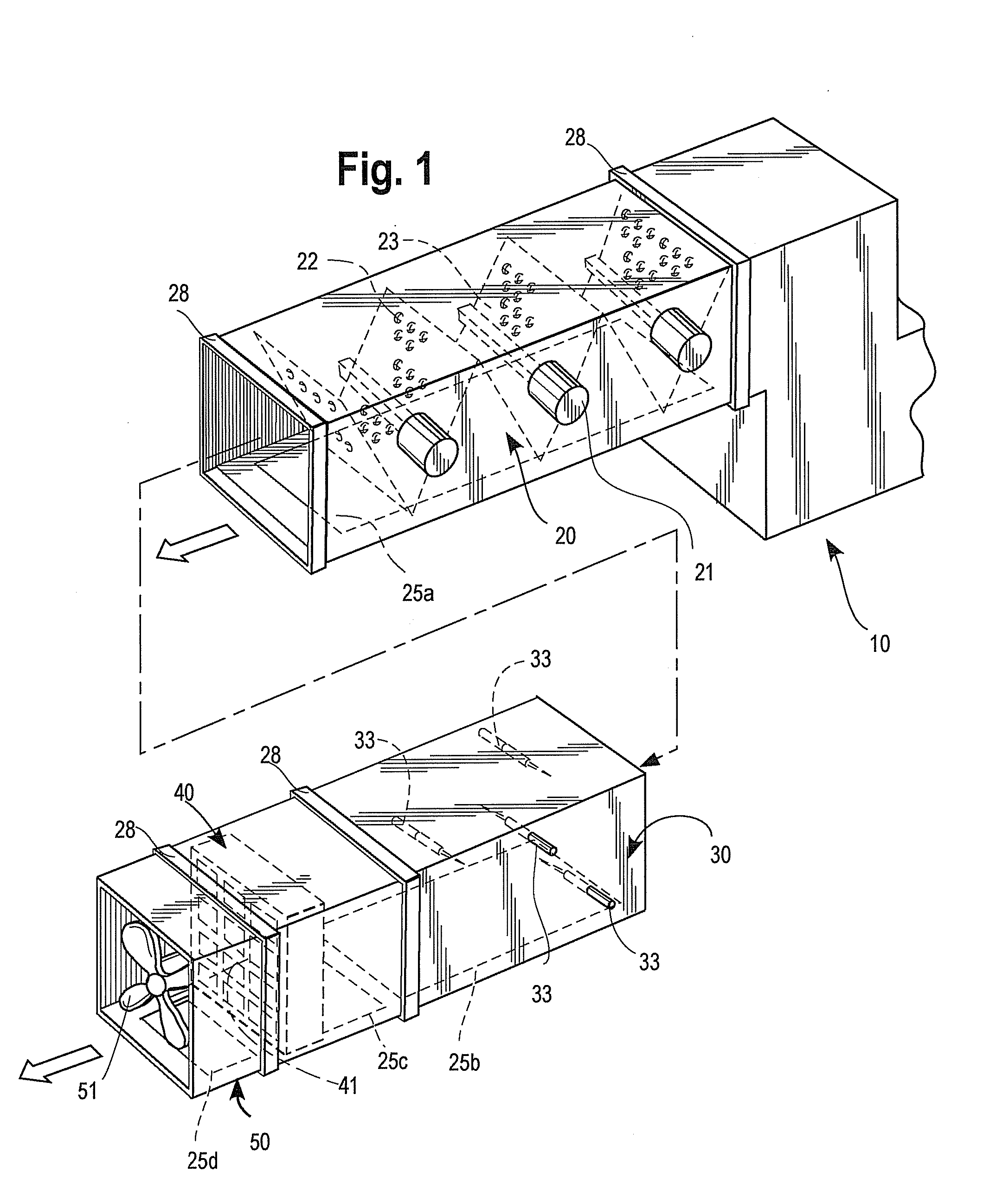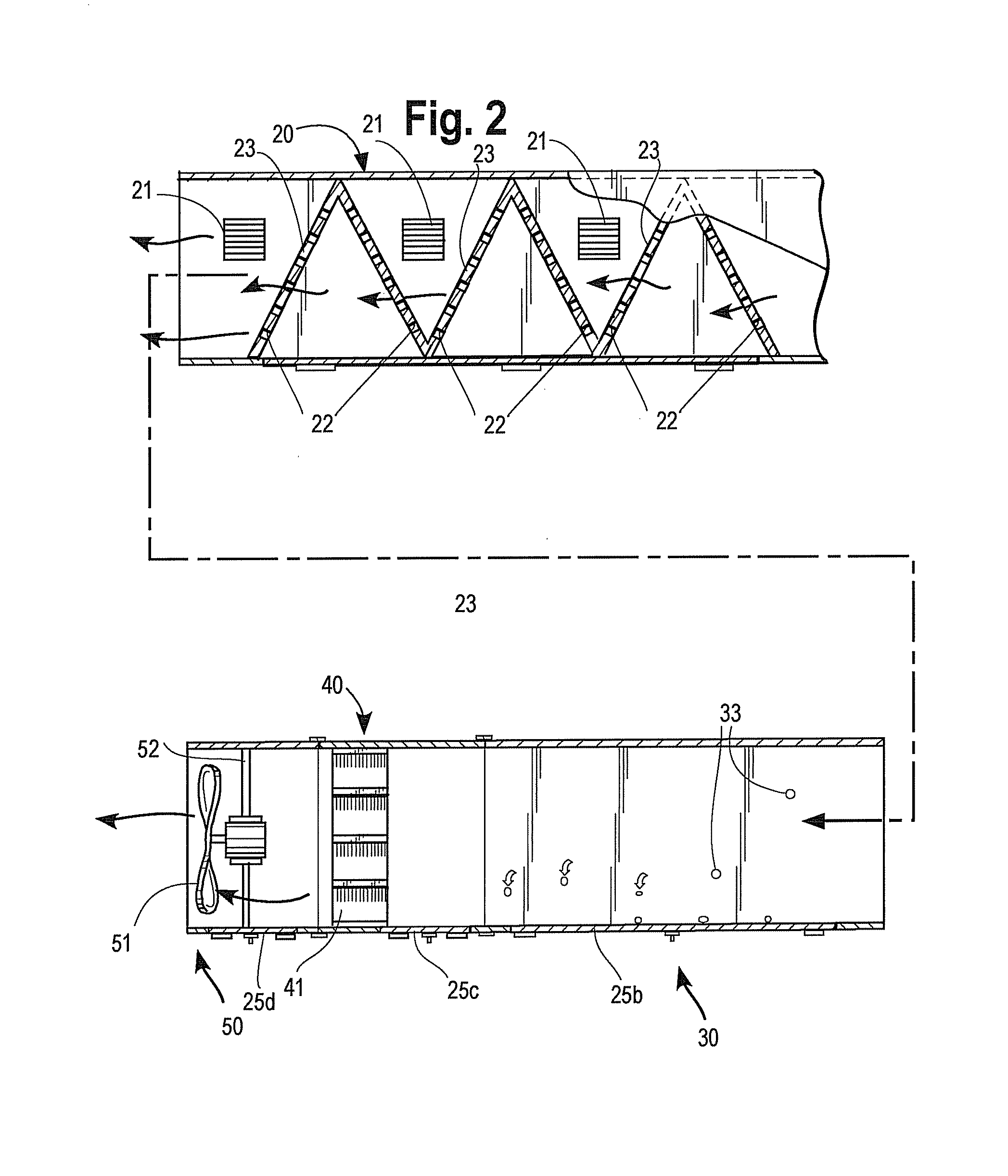Modular ductwork decontamination assembly
a ductwork and module technology, applied in the field of modules, can solve the problems of contaminated food and ground water, time-consuming and expensive, and unable to solve all the problems of air quality, and achieve the effect of reducing labor intensity, reducing maintenance costs and improving air quality
- Summary
- Abstract
- Description
- Claims
- Application Information
AI Technical Summary
Benefits of technology
Problems solved by technology
Method used
Image
Examples
Embodiment Construction
[0033]Ozone has been demonstrated to be an effective reagent to reduce the numbers of microbes contaminating food surfaces. It has been used to treat drinking water and irrigation systems. This disinfectant is a powerful oxidizing agent that has recently been given GRAS (Generally Recognized As Safe) status for use in food processing. Since it readily decomposes into oxygen, there are no chemical residues that could contaminate the food product or the environment.
[0034]The growing extent of microbial contamination of food and changing demographics has led to increasing frequency of food borne illness. Significant amounts of pathogens including Escherichia coli 0157:H7 and Salmonella typhimurium, cross-contaminate beef carcasses throughout processing and can further contaminate ground beef or processed beef products.
[0035]Ozone is used for water treatment because it oxidizes or disinfects many components that impact water quality. It will oxidize iron and manganese which precipitate ...
PUM
| Property | Measurement | Unit |
|---|---|---|
| Level | aaaaa | aaaaa |
Abstract
Description
Claims
Application Information
 Login to View More
Login to View More - R&D
- Intellectual Property
- Life Sciences
- Materials
- Tech Scout
- Unparalleled Data Quality
- Higher Quality Content
- 60% Fewer Hallucinations
Browse by: Latest US Patents, China's latest patents, Technical Efficacy Thesaurus, Application Domain, Technology Topic, Popular Technical Reports.
© 2025 PatSnap. All rights reserved.Legal|Privacy policy|Modern Slavery Act Transparency Statement|Sitemap|About US| Contact US: help@patsnap.com



